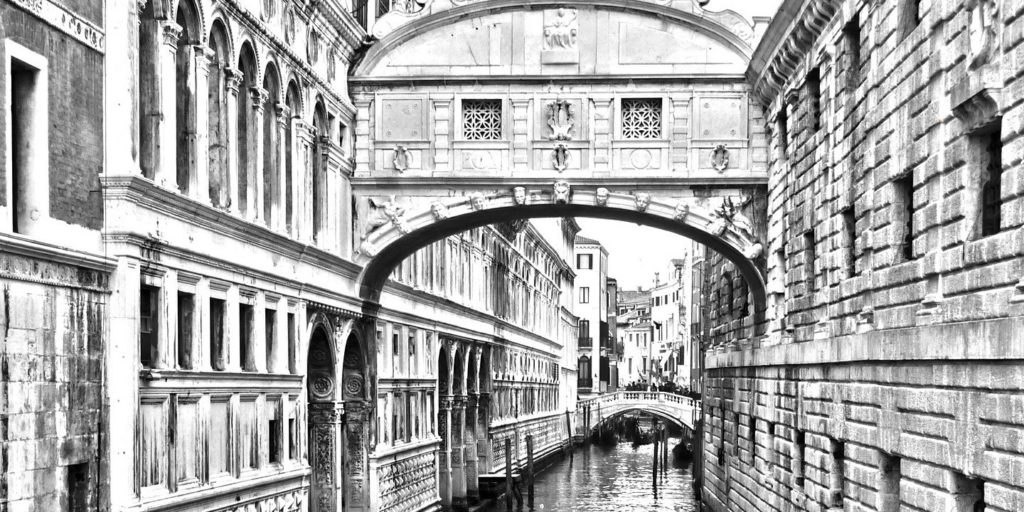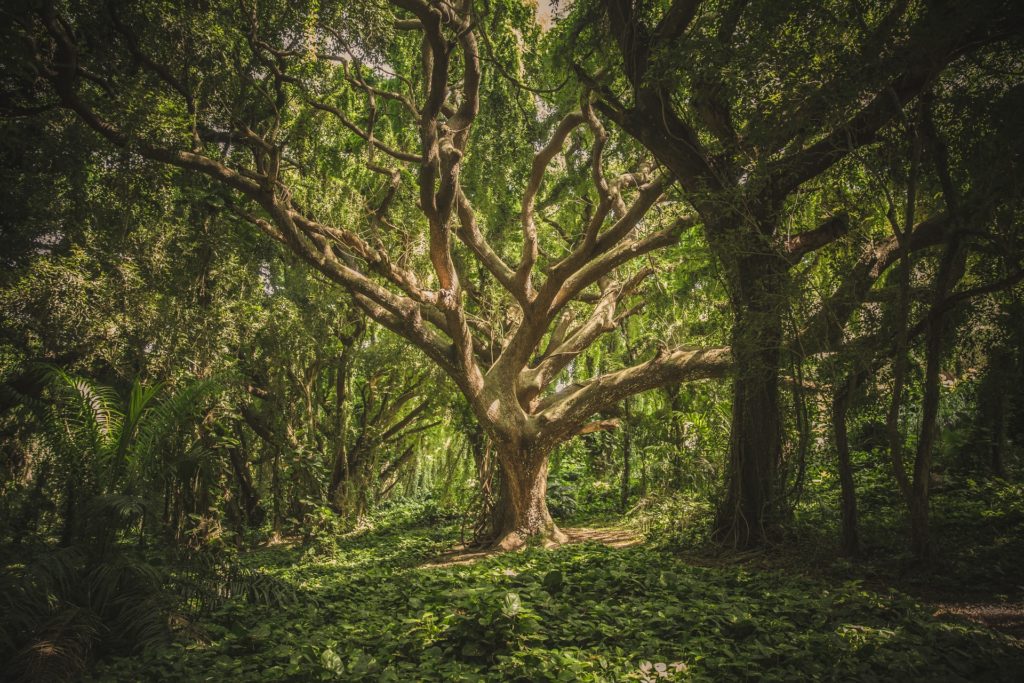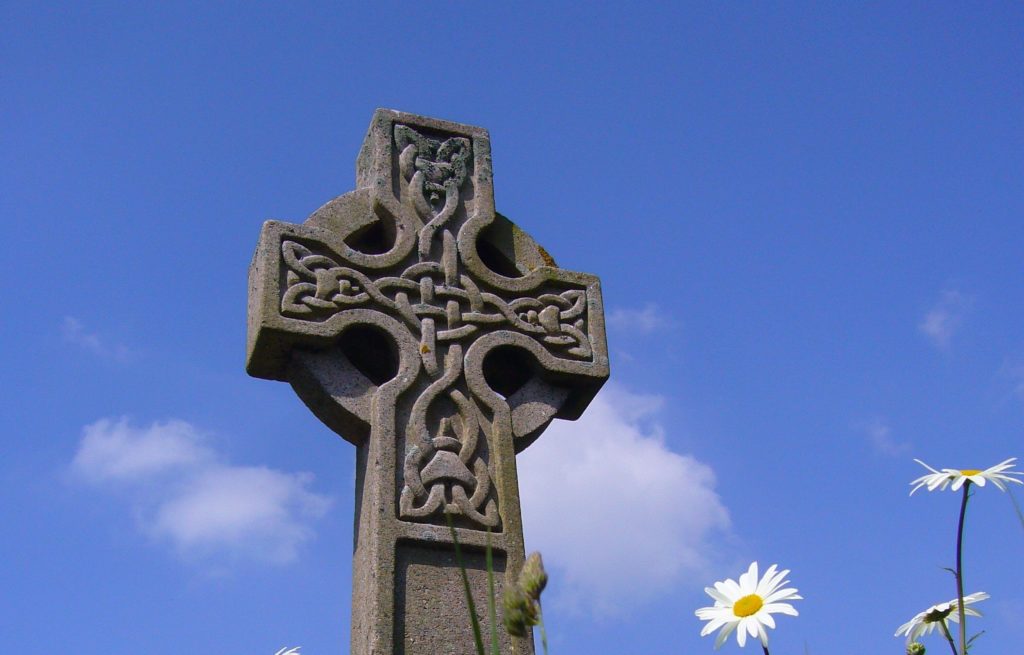The road to the Ness lies in the shadow of dead trees.
Dry, hollow things reaching leaflessly for the sky, the elms die in their great droves. Dutch elm disease, spread by Scolytus beetles, takes the majority, millions and millions of them. The young elms root themselves in the low soil, and as they grow above the hedgerows, the beetles find them. Soon the leaves yellow, far too early for summer, the branches starve, then the trunk, and finally the roots, such that the way to Orford goes beneath rows and rows of their withered silhouettes, cadavers clattering in a winter wind.
I’m sat passenger-side as Robert Macfarlane drives, Mateo and Gonçalo in the back seats. Over the last few weeks, Rob has led our seminar group of thirteen students at the University of Cambridge on a course titled ‘Cultures of the Anthropocene’ – exploring the far-reaching signatures of human activity through deep time and rock record, and how it has scarred itself upon cultural memory and the environment. We make our way now to Orford Ness, a shingle spit fringing the Suffolk coastline, for our final seminar: one last class conducted in the midst of what Rob calls a ‘peak-Anthropocene landscape’ of military-industrial structures and ecologies disintegrating, mingling, arising into new forms which defy aesthetic categories.
Having plied this road for years now, beneath the dead and dying elms, Rob has come to be intimately familiar with the Suffolk coast as it winds and rolls itself to the edge of the North Sea. We chat about Gonçalo’s time in Lisbon, Mateo’s work on a musical, then at some point we turn onto another country road and cross a line unmarked on any Satnav. ‘There,’ Rob says. ‘Do you see it? How the landscape has suddenly changed?’ I look out the window, and I do see. The dark clay of the earth, sodden with last night’s rain, has been replaced with sand. Gorse and heather take the place of hedgerows, and elms give way to thickets of pine and conifer, sloping in their dunes all the way down to the coast. It’s as if we’ve jumped continents; swapped out one geology for another in the time it took for our car to make the turn.
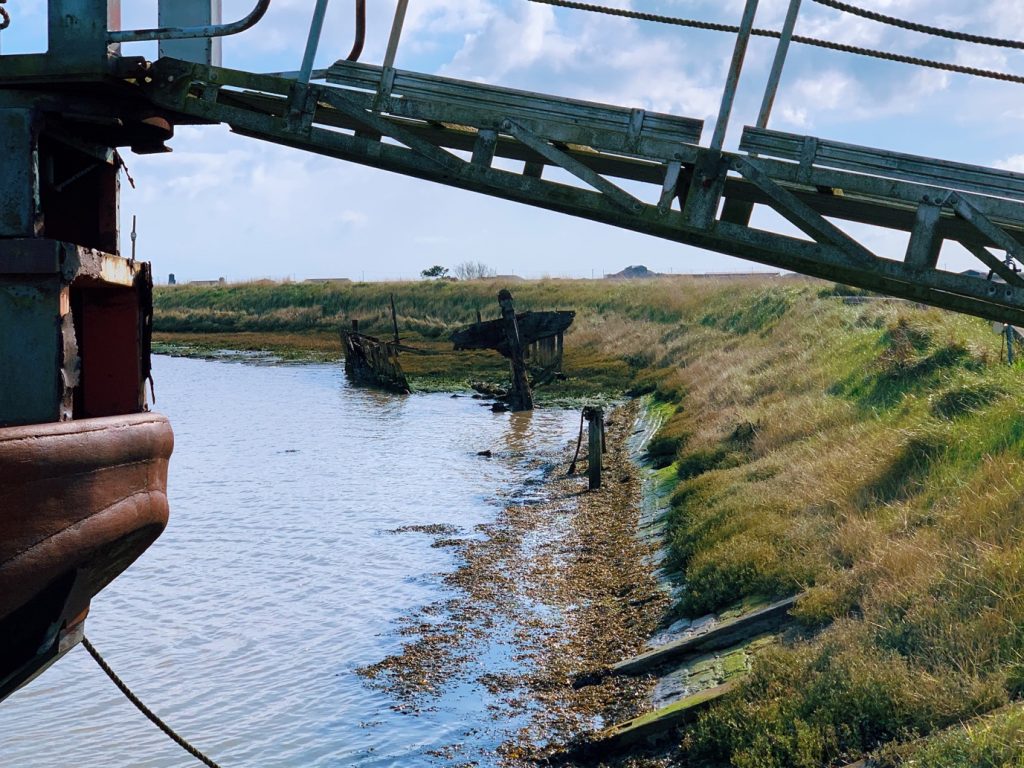
Swapping and switching become bywords for the rhythm of our journey on to the Ness itself. We emerge from the pines into the quiet boatyards of Orford, trading solid ground for the creaking hull of the boat as it churns us across the River Ore. Mid-morning sunshine dazzles the edge of a distant sea like an isthmus of light. Against the rotting hulls of grounded boats, our ranger David gives us our safety briefing, and then we set off into the marshlands of the Orford Ness National Nature Reserve. Here, the landscape changes again, shoreline exchanged for marshland and the teeming things that flock and shoal above its brackish pools. We watch great cloudbursts of plover turning against the whisper of a storm gathering out at sea. They wheel and dip and catch the burnish of the sun on their wings, in attestation of their name: pluvialis, the golden bird of the rain.
In the early 1900s, Orford Ness came under the administration of the Ministry of Defence, and the island became a testing ground for the apparatus of warfare, up until work ceased and its facilities closed in 1971. The Ministry sold the Ness to the National Trust in 1993, which committed itself to the work of conserving the unique geomorphologies that had coalesced in the two decades of human abandonment. Rob speaks of an uncanny interchangeability that the mind experiences here upon the Ness – the natural and the military merge; briar and barbed wire blur their sound on the tongue and their shape in the eyes. As if to prove his point, a sudden roaring windrush tears across the air above, startling us and pulling our gazes skyward. A flock of wigeons, arrayed in v-formation like a squadron of jet fighters, rip through the noon thermals, dark wings depositing sound in their wake in mimicry of a sonic boom. I feel like I can scarcely trust my senses at the timeliness of their fly-by, or the flinch-inducing intensity of their passage.
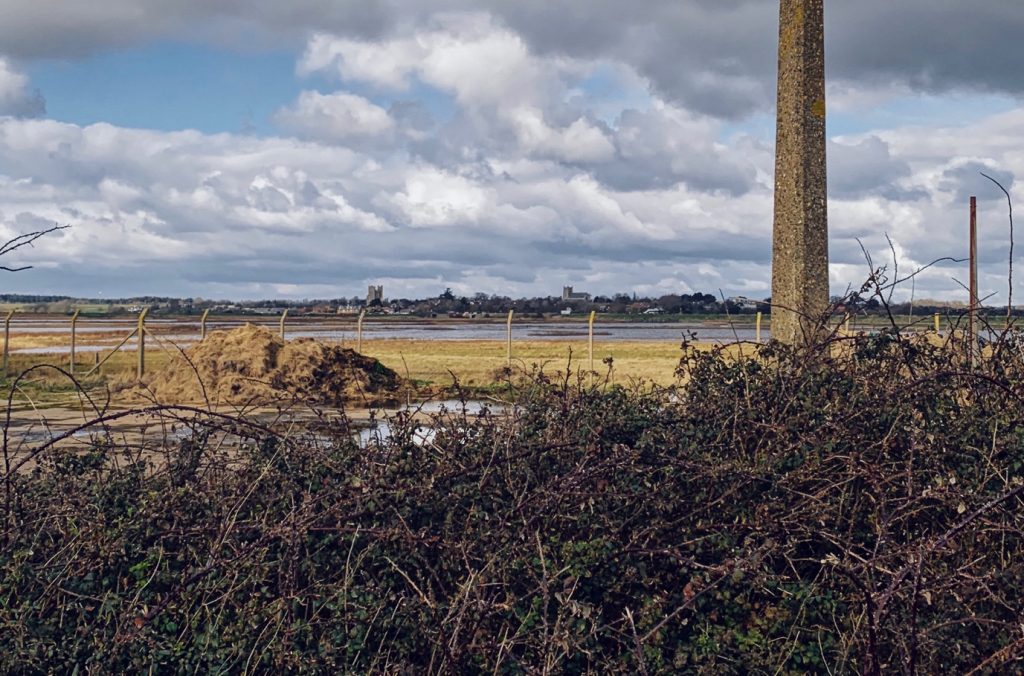
We walk on, through sky mirrored in puddles, past brambles twisting themselves together like cylinders of barbed wire. The mainland glitters through the thorn-lined gaps – Orford Castle, dappled in storm-cast sunshine, one defensive wall viewed through another. Walking with Coreen, I tell her that there’s an odd feeling I get here, of not quite knowing the appropriate tone to adopt. There is so much around us to celebrate, but also much that looms over it. Like schoolkids on an excursion, we’ve left our classrooms for a Friday afternoon spent beneath a brilliantly shining sun; only, we’re traipsing across an island dedicated to the perfecting of great violence. Commenting on how landscapes come to bear the troubling memory of military presence, the writer Rachel Woodward reflects on the caveats of seeing the Ness as a purely ‘celebratory site’, despite the ease with which its National Trust ownership lends itself to touring and observation. ‘There is ambivalence and doubt here,’ she reminds us, ‘with regard to what is being physically and ideologically conserved’. I think of her words as we pass by the blast tunnel, along whose lengths sabot rounds were once fired at high speed. Using photographs taken at the moment of impact, engineers designed each subsequent round to deliver internal payloads with increasingly meticulous precision: polishing the physics of death within the tunnel’s walls. Ahead of Coreen and I, Erika and Reem skip and dance past what’s left of its dilapidated ruin.
∆
Crossing a thin bridge towards the ocean, the landscape shifts again, and the grassy saltwater marsh collapses into a vast expanse of flint shingle – the long stretch of the beach, armoured by a hundred billion stones. It was on this shingle flat that Robert Alexander Watson-Watt and a team of scientists began experimental work on radio navigation technology in the 1930s, spooked by rumours that Nazi Germany had developed ‘death rays’ which could demolish cities through a simple radio transmission. From a two-storey tower called the Black Beacon, Watson-Watt’s team beamed radio signals across the uninterrupted bleakness of the Ness’s foreshore, proving and refining the system later named Radio Direction and Ranging – radar. Watson-Watt described his findings with the language of acoustics, likening the way the system worked to ‘a sound echo’. ‘A sharp hand-clap is sent back as an echo by such a reflecting surface as a cliff,’ he wrote, ‘and the distance of the cliff from the person making the hand-clap can be estimated by counting seconds until the echo is heard’.
As we make our way further and further across the shingle, I think of the irony in the fact that the Ness became the setting in which radar was pioneered. For an island where such pivotal technology was discovered – explained through sound, animated by echo – noise carries in a remarkably open way, one that my ears are unattuned to. Used to the density of urban compress, where acoustics absorb and bounce noise off a thousand different surfaces, sound here races unobstructed and un-echoing across miles and miles of a maddening nothingness. The crackle and crunch of the flint beneath our heels pops like distant gunfire.
The openness of the open Ness was a necessity for Watson-Watt’s experiments, as the Black Beacon could send out its hand-claps clear across the low, unadorned land, with nothing in the way to scramble its register. Yet the Ness was simultaneously a place where sound was closed off, contained, suppressed and stymied. The long shadow of war would continue to haunt the island through the latter half of the twentieth century, even after death rays were disproven and radar turned the tide for the RAF in the skies above Britain. As the Cold War crept its way across Europe, the Ness was used again by the British military to test the effects of the environment on the armoured casings of atomic bombs. Work on the island was shrouded in armour of its own, a policy of protective secrecy and silence that suffocated speech. Scientists were forbidden from discussing their day-to-day jobs outside their department, even with people working in the very next building.
Climbing the Bomb Ballistics Building, where observers watched explosives dropped from the underbellies of aircraft, our boots on the steel staircase ring out across the Ness like a tolling church bell. From our vantage at the top of the tower, we look out onto the lay of the Ness as they would have done: watching the lighthouse along the far edge of the shore crumble year-on-year into an encroaching sea, making sense of the shingle shaping itself into patterns we are learning to read.
The geology of the Ness tells a story both of interplay and intervention, between natural and manmade influences. Long ridgelines record where the wind and sea tossed flint onto the beach in spattering detonations of stone, undulating crests coming to mirror the waves of the ocean. Red dye marks the trails along the shingle that are safe to walk, clear of the unexploded bombs still haunting the space beneath the pebbles. Craters pockmark the land, scars of the ordnance once tested here. These in turn have fostered curious, unexpected ecologies – the depth of each crater shields vegetation from the wind, allowing sparse patches of elder to take root, greening over the memory of devastation. Through binoculars, we watch hares and Chinese water deer grazing in bomb-hollowed oases.
As we descend the tower, Rob calls us to the entrance of its shed. He points out the stones hung from the doorframe, strung through their perforated centres with bits of wire. These, he tells us, are hag-stones – pebbles with holes in them created by the action of water, thought to bring good luck and immunity from witchcraft. The challenge for the afternoon, as we make our way down to the slopping brown fringe of the North Sea, is to find a hag-stone of our own. We comb the beach for them, splitting up, heads tilted downwards against the slosh and roar of the waves. I find none, though in a pile of driftwood, what I mistake at first for the hole of a hag-stone turns out to be the hollow of a vertebra, aged by the elements to the colour and texture of worn wood. Tossing it about in my palm, I wonder what it came from. It’s too big to be the backbone of a muntjac or a hare; perhaps a seal or a dolphin. Rob asks if I’ve found anything, and I show him my false-flint vertebrae. ‘Here’, he says, giving me a hag-stone that he’s picked up. ‘Hag-stone for hag-bone’.
Hag-stones endure in the collective memory and folklore of the region. Elizabethan miscellanies record the hanging of hag-stones to ward off the demons and witches that were believed to torment the horses once night fell – to banish these eponymous Night-mares, farmers would ‘take a Flynt Stone that hath a hole of hys owne kinde, and hang it ouer’ the stable doors. In the 1920s, Herbert Toms, curator of the Brighton Museum, wandered the Sussex coastline to document its obscure and forgotten folklore. Toms compiled the contexts of hag-stone usage from fieldwork and interviews with local village folk, finding their significance dictated by trade and geography. Deeper inland, farmhands strung up hag-stones to protect homesteads and livestock from witching influence; out by the beaches of Weymouth and the Isle of Man, hag-stones hung from fishing boat bows and draped the necks of lifeboat-men, wards against drowning and storms out at sea. Even today, neo-pagan websites ascribe a hallowed reverence to the power of the hag-stone, to aid the user in ‘seeing’ fey things that lurk beyond the edges of our usual vision. Looking through the perforation of a ‘fairy stone’ found near the ocean will apparently reveal the water spirits and spectres that haunt the waves.
I see no mermaids or kelpies that day on the Ness, but I keep raising the hag-bone to my eyes anyway, as an aperture with which to frame objects of interest against the flattening effect of the Ness’s expanse. If the height of the Bomb Ballistics Building afforded some sense-making of the Ness’s geography, descending from it scrambles sight, untuning perspective with the wide play of the bare world about us. The eye scans the long length of the beach, searching for human reference point, and finds nothing but sea and sky blurring thinly along the grey cast of the horizon. With no other human presence on the shingle spit besides ourselves, the weapons-testing facilities in the distance look like toy structures. Things begin to shapeshift unsteadily in our vision; bushes like barbed wire back in the marsh, barbed wire like bushes out on the shingle. I ask Reem at some point if she too sees a water deer by a massive cinderblock, only for that low, crouched thing to unfold into the shape of a hare and explode across the rocks with a fawn’s bounding stride.
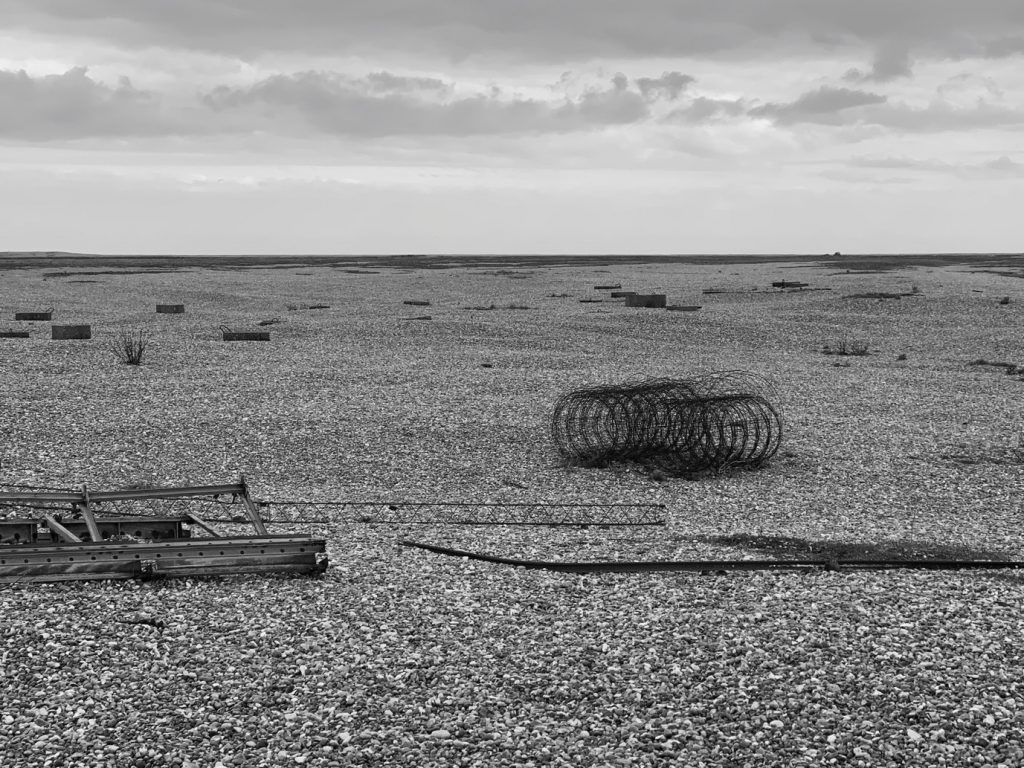
∆
We follow the curvature of the shoreline east, moving deep into the post-apocalyptic ruin where the Atomic Weapons Research Establishment once carried out their experiments. The road is dotted with the carcasses of buildings abandoned to dilapidation. Steel rods jut from eroding concrete like bones; stagnant rainwater mires pool in the mossy hollow of collapsing armouries. Before us, the blast pagodas loom – grim things of grey concrete about which gulls swirl, cawing and calling beneath black-bellied clouds. When the Ness was used by the AWRE as an ordnance-testing ground, the pagodas were constructed to militate against accidental explosion. The AWRE supposedly tested only the protective casing of its nuclear warheads on the Ness, examining whether they could endure the environmental rigours of shock, G-forces and temperature, without bringing actual radioactive payloads on-site. Highly volatile explosives were still involved in testing, however, and the broad eaves of the pagodas were designed to contain and dissipate the fiery cost of failure.
Today, like much of the Ness, the pagodas have themselves crumbled into the strange rebirth that lies beyond ruin. Over long and still years, the wind has blown shingle onto the tops of the pagodas, where grass has taken root and the gulls come to roost. They perch atop the green-roofed monolith, cobbling nests together out of grass, seaweed, barbed wire and broken pieces of weaponry – habitation from instruments of harm. Underlit by the dropping sun like a coal shard burning out its last angry embers, the storm clouds begin to blow in over the pagodas from the sea, dogging our steps like some kind of omen. I run my fingers over the hag-stone in my coat pocket.
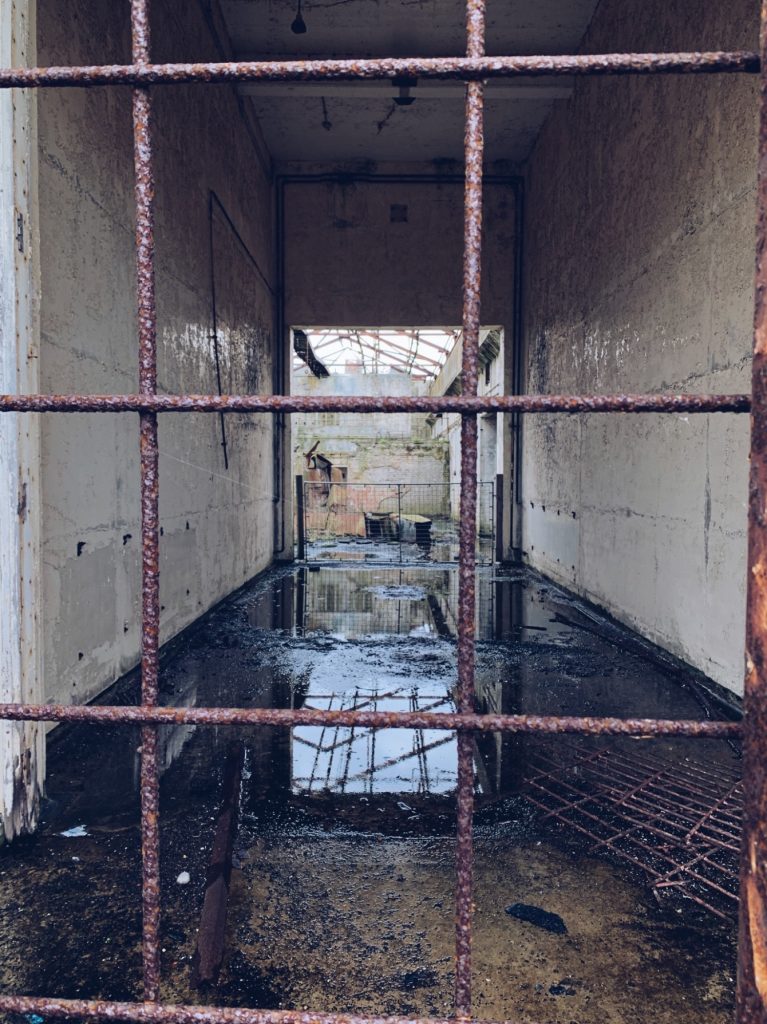
The gradual decay of the pagodas has made approach and entry unsafe, but outside their grey walls, Rob tells us about his previous expeditions into their interiors. The insurgent ecologies of the Ness colonise outer and inner structure with equal vigour – where grass carpets the eaves, algae and lichen fill the underground tunnels. Calling the interiors a ‘green chapel’, Rob recounts seeing the walls of these spaces adorned with crosses all along their length. Once, these crosses allowed the bombs within the pagodas to be raised, lowered, and moved horizontally through each level. Now load-less and empty, they stand as devices of symbol rather than service. ‘The interior of the pagoda has become a place of worship,’ Rob reflects.
In the 14th century Middle English romance Sir Gawain and the Green Knight, a ghostly green warrior carrying an axe and a holly bough rides into King Arthur’s hall at the turn of the New Year, challenging any knight to strike him with his own axe, in return for the exchanging of the blow. Sir Gawain takes up the warrior’s challenge and beheads him, only for the green knight to pick up his severed head and laugh, giving Gawain the appointed place and time for the exchange – in a year and a day, at a grassy hillock known as the Green Chapel, deep in the wilderness. So begins the turning wheel of the poem, as the celebration of the New Year slides over into the harshness of midwinter, and Gawain journeys through unforgiving wildlands unto the Chapel and certain death.
Imagining the algae creeping through the furrowed crosses inside their walls, I’m struck suddenly by the linguistic and spatial echo of the Ness’s ‘green chapel’ in the old poem. Though centuries apart, some resonance of the work seems to have found its way through the histories of the Ness to this very moment, as the grasses atop the pagoda shiver in the stormwind. Green avatars of wilderness breaking into spaces of human claim, decay and rebirth as the seasons lengthen and turn; the shadow of apocalypse hanging always over Gawain’s head, as it must have done for the scientists working on the Ness in the 1960s, balancing at the cusp of nuclear annihilation – and as it does for us now in an age of our own, the rising seas and wildfires of a climate in crisis like an axe at our necks.
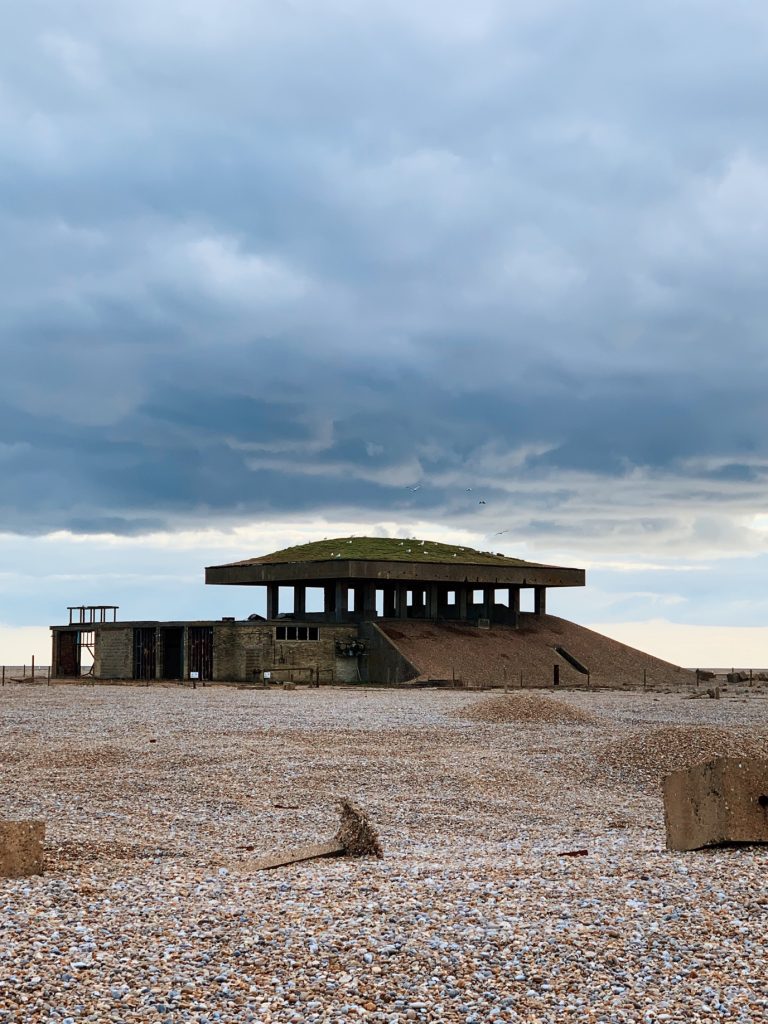
∆
Back now into the marsh, harriers caterwauling into startled flocks of oystercatchers, then the Ore churning and chopping beneath the boat, and the road again curving through the graveyard of the elms. We leave Orford Ness behind us, but some part of its enigmatic atmosphere clings to our senses still. Matteo, Gonçalo and I recount the day in hushed tones, unsettled by the cold landscapes of the Ness. Something about the island – perhaps the memory of the violence once intended on its soil; perhaps the blasted barrenness of its many wreckages, more severe than the clutter of a simple scrapyard – retains a capacity to shiver us still. Rob tells us the story of a friend he once brought onto the Ness, who broke down suddenly as she approached the foreshore, old and dormant traumas recalled afresh in its atmosphere.
But Rob also reminds us then that the Ness was not purely a place of threat and violence. The spectres of its past are varied in tone as well as age, he points out, noting how the scientists and engineers brought onto the Isle across the long years of its military history were quite likely pulled fresh from university, young minds set straight to work on the war effort. What a buzz there must have been as they set out from the boatyards at Orford! They would have been no older than us, bringing with them all the excitement and fervour of youth at work on research that promised to be ground-breaking, life-changing. Further past the spit, a Chinese labour battalion once spent backbreaking months shoring up flood defences against the North Sea, as the First World War tore and burnt through the continent. Stories still exist of the labourers heading deep into the marsh, searching for grasshoppers and crickets to keep in jars placed by their bedsides at night, that the chirping of the insects might remind them of home. The Ness is indeed a haunted place – possessed by memories, the revenants which animate the reaches of the island, warming its desolate corners with human speech and breath.
The chimeric, volatile terrains of the Ness can be thought of as a microcosmic representation of the age we live in. Nature wrestles uneasily with the world we have shaped for ourselves: flowers in the divots of earth detonated by bombs, algal blooms lighting the dark hollows of empty concrete towers like green flame. But not all landscapes enjoy the post-industrial abandonment that the Ness is privileged with, gazetted now as a nature reserve under the National Trust. This is also an age in which our metaphors for impact have grown laughably insufficient: with unprecedented acceleration and startling potency, mankind’s mark on the world around him has exceeded mere finger- and foot-print, clawing, digging, dredging into geographies past the point of return.
The editors of the book Arts of Living on a Damaged Planet write that ‘as humans reshape the landscape, we forget what was there before. Ecologists call this forgetting the “shifting baseline syndrome”. Our newly shaped and ruined landscapes become the new reality’. Memory becomes critical in refusing the amnesia of a world we are constantly changing and shifting, the hag-stone through which we conjure back the erased, easily-forgotten histories of the places we pass through. ‘Ghosts remind us. Ghosts point to our forgetting, showing us how living landscapes are imbued with earlier tracks and traces’. So the phantoms of the Ness find the ground of their haunting. They help us see the landscape as it is, as it was, as it could be – homeliness amidst loneliness, habitats out of hurt. The records of violence inscribed on the rocks take on new ecosystems and meanings, reminding us of the chance for making and re-making from ruin.
Reaching Cambridge at last, we pull into the carpark at Emmanuel College and say our goodbyes to one another. I cycle back to Wolfson under the rising night, looking up to see stratus clouds in long, horizontal ridges of vapour. Waves of their own, shingle mirrored in sky, they catch the light of the low-slung moon like shining sea-glass. When I reach my room, I collapse straight into my bed, exhausted from the day-long exposure to the biting wind. I close my eyes and listen to the whispers of late-wintered life through the open window: skylarks settling to rest, the muttering of an owl in the treeline – and, inexplicably, the rasp and churr of a cricket, somewhere in the thin woods out beyond the fence.
My hands reach for my coat pocket. Strangely warm and smoothly riven, the hag-stone is still there.
∆
Postscript: Foreshores and Foreshadows
Though we did not know it, making plans to get the class together for drinks over the Easter break, those farewells in the dusk at Emma would be the last time in a while that we’d all see each other. In less than a week, the coronavirus pandemic upended the life that we knew – evacuating us from Cambridge, scuppering our last term in the city.
Later, in a Skype call with Rob, we talk about the chaos of our situations and the foreshadowing of the Ness. At the time, we thought its desolation unique to that particular shingle spit at the southeast point of England, not knowing that its eerie atmosphere – emptied of people, devoid of sound – would anticipate the later hollowing of the world as it retreated into lockdown. ‘That storm along the beach was for us,’ Rob muses.
At our first seminar in January, Rob introduced the Anthropocene to us as an epoch inhabiting an in-between tense. To think of the Anthropocene is to look into the future and look back at the present. It is a will-have-been geology, because it asks: what will have been made of this time of ours, by a future stratigrapher looking backwards – how will they determine the impact of our hands on this present age?
We called this a thought experiment, then – a question answerable only by such a future generation. Yet that last adventure across the Ore, in its own way, proved to inhabit the same unbound chronology as the wider thought experiment of the course: exploring an empty place-that-was, presaging the world-that-would-be, and all of us left to make what we would of that final afternoon, out on the foreshore of the Ness.
Leonard Yip is a writer of landscape, people, nature, and faith, and the places where these intersect. He recently graduated with an MPhil in Modern and Contemporary Literature from the University of Cambridge, where he wrote his dissertation on multimedia representations of the ‘edgelands’ of Singapore – the landscape between city and country, with unique features and ecologies of its own. He lives and works in Singapore, where he is currently furthering his work on the edgelands and other terrains of the Anthropocene. More of his work can be found here.


